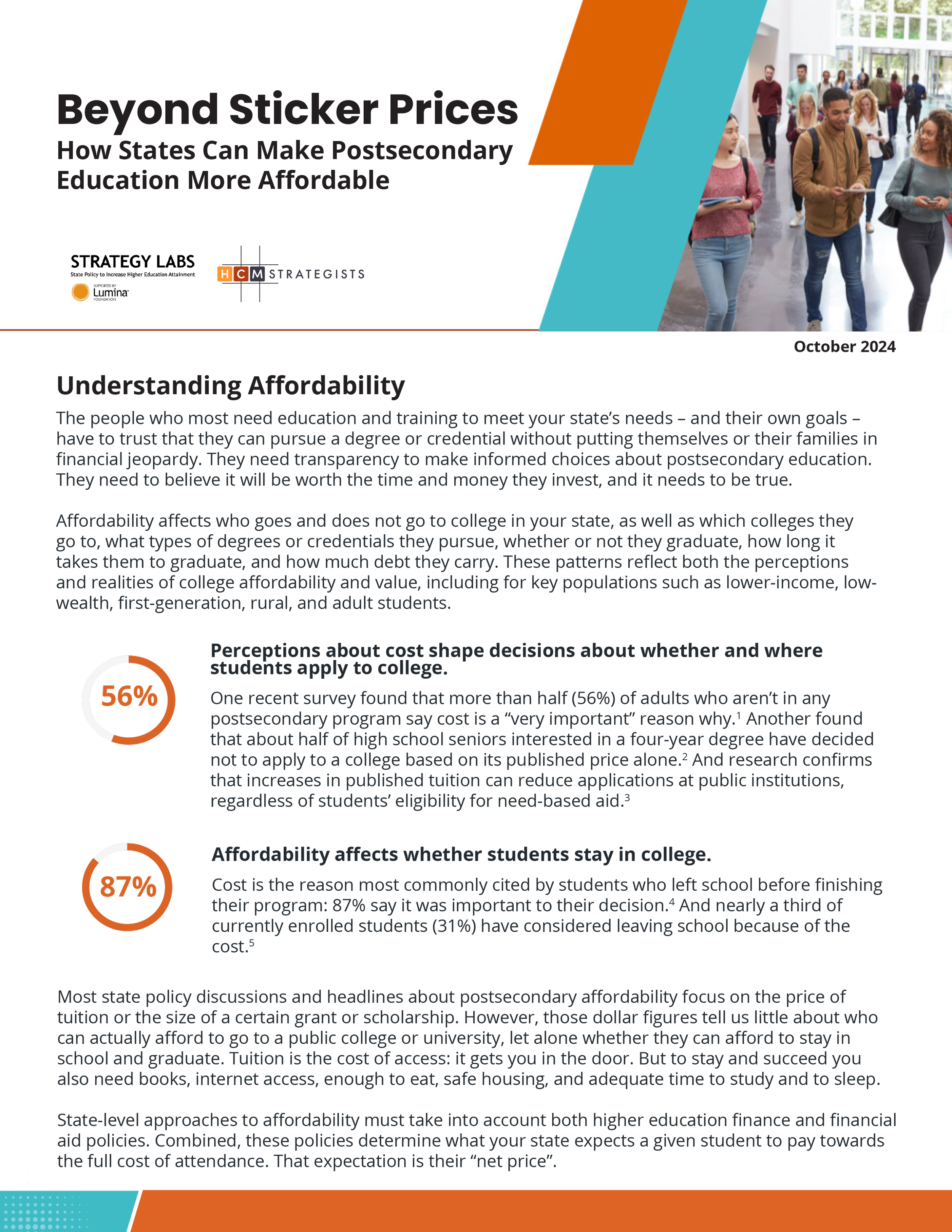Beyond Sticker Prices: How States Can Make Postsecondary Education More Affordable
Affordability affects who goes and does not go to college, as well as which colleges they go to, what types of degrees or credentials they pursue, whether or not they graduate, how long it takes them to graduate, and how much debt they carry. State policymakers and institutional leaders should bear in mind that both aspiring and current students need simple, trustworthy messages about affordability, as well as user-friendly resources and support to navigate existing systems and processes.
Our latest finance brief, Beyond Sticker Prices: How States Can Make Postsecondary Education More Affordable, analyzes financial aid programs and affordability-related data in nine states: Alabama, California, Indiana, Louisiana, Ohio, Oklahoma, Texas, Virginia and Washington. This analysis, which looked across regions, populations and various financial aid models, illustrates the significant variation in affordability across states, institutions and income brackets. In some states, even two-year colleges provide significant cost barriers to students. For example, the lowest income community college students in Louisiana, Ohio, Oklahoma, Texas and Virginia, face average net prices over $6,500, representing over 20% of family income.
The brief also offers policy considerations for state leaders as they build and redesign their state funding models, and offers examples of policy innovations to increase affordability.
Acknowledgements
This brief was written by Lauren Asher, Senior Affiliate with HCM Strategists and national expert on college affordability and higher education policy. Her HCM colleagues Dr. Nate Johnson, Marissa Molina, and Kristin D. Hultquist made significant contributions to the data and analysis.
For more information or questions about how your state can look comprehensively at how to define and improve college affordability, please contact Jessica Collis at jessica_collis@hcmstrategists.com.
Lumina Foundation supports state leaders’ efforts to increase post-high school attainment through Strategy Labs—a resource for policymakers and influencers in all 50 states that provides nonpartisan research, data, peer advice, and technical support.

